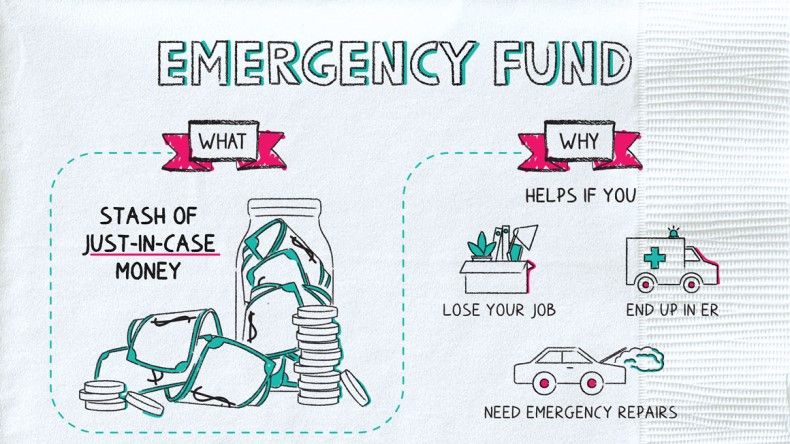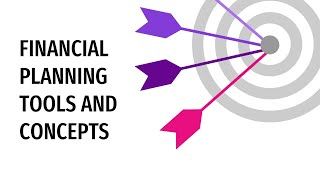Financial Planning : An Extensive Guide to Manage Your Finances

Managing your finances is a crucial aspect of living a comfortable life. Financial planning is essential whether you are an investor or simply someone who wants to save money. You can attain your financial targets and safeguard your future with the right strategies. We'll discuss all the things you need to know to plan for your finances in this extensive guide.
Step 1: Set Your Goals

The first step to effective financial planning is setting your goals. You need to identify what you want to achieve with your finances. It could be paying off debts, saving for a down payment on a house, or investing in stocks. You have to be sure of your objectives, no matter what. Put these in writing, and describe them in a way that they are specific, quantifiable, attainable, relevant, and time-bound.
Step 2: Create a Budget
Once you have set your goals, the next step is creating a budget. The budget sets out the way you'll spend your money. It is essential for managing your expenses and ensuring that you do not spend more than you earn.
Step 3: How to create a budget?

To create a budget, you need to:
-Track your income: Calculate how much money you earn every month.
-List your expenses: Write down all your expenses, including bills, groceries, transportation, and entertainment.
-Categorize your expenses: Group your expenses into categories such as fixed expenses (rent, mortgage, car payments), variable expenses (utilities, groceries), and discretionary expenses (entertainment, travel).
-Compare your income and expenses: Compare your income and expenses to see if you can reduce your expenses or increase your income.
Step 4: Invest Wisely
Investing is the most effective way of accumulating assets and achieving your financial objectives. However, investing comes with risks, and you need to be careful when choosing where to invest your money. Before investing, you should:
-Research: Do your research to understand the investment options available and the risks involved.
-Set your investment goals: Identify what you want to achieve with your investments.
-Diversify your finances: Spread your investments across different stocks, bonds, and other assets to reduce the risks.
Step 5: Review your plan regularly
Monitor your investments regularly to ensure that they are performing well and adjust your portfolio as needed.
Step 6: Save for Emergencies

Emergencies can happen at any time, and they can have a significant impact on your finances. It is crucial to have an emergency fund to cover unexpected expenses such as medical bills, car repairs, or job loss. To create an emergency fund:
- Establish a saving objective: Evaluate how much money you'll need to set aside for emergencies.
-Start saving: Set up an automatic savings plan to save a portion of your income every month.
- Separate your emergency fund from the standard savings account: You're not going to have an emergency fund in a normal savings account. Make sure your emergency fund is in a separate account out of ordinary savings accounts.
-Manage your emergency fund: Only use your emergency fund for genuine emergencies, and replenish it as soon as possible.
Step 7: Review Your Finances Regularly
Financial planning is an ongoing process, and you need to review your finances regularly to ensure that you are on track to achieving your goals. You should:
-Review your budget: Check your budget regularly to ensure you are sticking to your plan.
-Track your expenses: Keep track of your expenses to identify areas where you can reduce your spending.
-Review your investments: Monitor your investments to ensure that they are performing well.
-Update your goals: Review your goals regularly and adjust them as needed.
Financial Planning Tools :

As we dive into the era of digital technology, it's no surprise that we have access to online financial planning tools at our fingertips. These tools are not only easy to use, but they are also convenient and can help us save time and money.
How financial tools are useful?
Online financial planning tools are designed to provide investors and money savers with the necessary information and resources to make informed financial decisions. These tools can help you create a budget, track your expenses, monitor your investments, and plan for your financial future.
Benefits of online financial tools :
One of the greatest benefits of online financial planning tools is that they are accessible anytime, anywhere. You don't have to wait for an appointment with a financial advisor or rely on traditional methods of financial planning. Instead, you can access all the information you need through your computer or mobile device.
Another benefit of online financial planning tools is that they are often free or low-cost. You don't have to spend a fortune on financial planning services or software. Many online tools offer basic features for free, and you can upgrade to premium services when you need more advanced features.
Popular online financial planning tools :
1) MINT :
One popular online financial planning tool is Mint. Mint is a free tool that allows you to connect all your financial accounts in one place. You'll be able to keep track of spending, draw up your budget, and set financial targets. On the basis of your spending patterns and financial objectives, Mint provides personal financial advice.
2) PERSONAL CAPITAL :
Another popular tool is Personal Capital. Personal Capital is a free tool that offers investment advice and portfolio management services. You can connect all your investment accounts and get a complete view of your portfolio. Personal Capital also offers financial planning services for a fee.
2) ACORNS :
If you're looking for a tool to help you save money, then consider using Acorns. Acorns is a free tool that rounds up your purchases to the nearest dollar and invests the spare change. Recurring investments and cash refunds on purchases can also be set up.
Financial plan for business:

As a business owner, it's essential to have a solid financial plan in place to ensure the success and longevity of your business. A financial plan is a road map that outlines your business's financial goals, strategies, and action plans to achieve these goals. It's never too early or too late to start creating a financial plan for your business.
Set the business’s financial plan :
Setting financial objectives is the first step in setting up a financial plan. What financial gain do you want to make in your business? Do you want to increase your revenue, reduce your expenses, or improve your cash flow? Once you have identified your financial goals, you can start developing strategies to achieve them.
Budget for your Business :
The next step is to create a budget. A budget is a financial plan that outlines your expected income and expenses for a specific period, usually a year. Your budget should include all your business's expenses, such as rent, salaries, utilities, supplies, and marketing expenses. It's essential to review your budget regularly to ensure that you're staying on track and making adjustments as needed.
Managing your Business’s cash flow :
Another crucial aspect of a financial plan is managing your cash flow. Cash flow is how you move cash in and out of your business. It's essential to have a positive cash flow to ensure that you can pay your bills, invest in your business, and have a buffer for unexpected expenses. To manage your cash flow, you need to track your cash inflows and outflows and develop strategies to improve your cash flow, such as negotiating better payment terms with suppliers or reducing your expenses.
Managing your debt :
In addition to managing your cash flow, it's also important to manage your debt. Debt can be an excellent tool to finance your business, but it can also be a burden if not managed properly. You need to have a plan to pay off your debt and avoid taking on more debt than you can handle. To manage your debt, you need to understand your debt-to-equity ratio, develop a debt payment plan, and negotiate with your creditors to reduce your interest rates.
Plan for long-term :
Finally, it's essential to have a plan for long-term financial stability. This includes creating a savings plan for emergencies and retirement. You need to have a solid understanding of your business's financial health and develop a plan to ensure its long-term sustainability.
In Closure :

In conclusion, financial planning is essential for managing your finances effectively. By setting your goals, creating a budget, investing wisely, saving for emergencies, and reviewing your finances regularly, you can achieve your financial objectives and secure your future. Remember, financial planning is a continuous process, and you must be committed to achieving your goals.
Online financial planning tools are a great way to take control of your finances and plan for your financial future. They are easy to use, accessible, and often free or low-cost. With so many options available, you can find the right tool for your financial needs and goals. Start exploring online financial planning tools today and take the first step towards financial freedom.
Creating a financial plan is critical for the success of your business. It's essential to set your financial goals, create a budget, manage your cash flow and debt, and plan for long-term financial stability. Remember to review your financial plan regularly and make adjustments as needed to ensure that your business is on track to achieve its financial goals. With a solid financial plan in place, you can focus on growing your business and achieving your vision for success.

